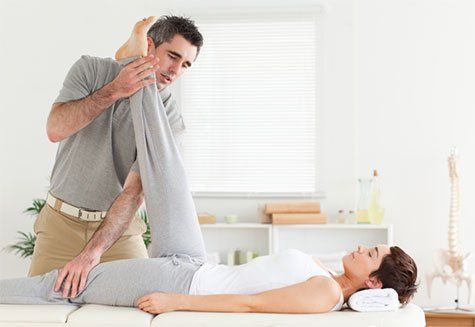When muscles, tendons, or ligaments of the spine are damaged through work injuries, car accidents, overexertion, repetitive motion, or simply weakened by inactivity, your overall health is affected.
An important step towards complete rehabilitation is restoring proper spinal function through chiropractic adjustments.
Without some form of rehabilitation, recovery from an injury or a long-standing spinal problem can take longer to achieve. Overlooking the importance of improved range of motion and muscle strengthening can result in a relapse, with your original health problem returning again and again. Chiropractic rehabilitation involves the restoration of proper joint function of the spine or extremities, and the strengthening of supporting muscles and soft tissue. This will usually involve specific spinal adjustments, combined with a program of stretching, resistance training, and exercises to improve muscle tone. Some patients receive a set of simple exercises they can do at home. Other types of injuries will require the use of specialized equipment to isolate and strengthen specific areas of the spine.
Ask your doctor for ways you can speed the healing process and strengthen the supporting soft tissue of your spine through appropriate rehabilitation.

